#Ancient Assyrian
Text


~ Plaque of conjuration against the Lamashtu, called "plaque of the underworld" or Hell Plate.
Period: Neo-Assyrian (1st half of the millennium)
Place of origin: Assyria
Medium: Bronze
#ancient#ancient art#history#museum#archeology#ancient sculpture#ancient history#archaeology#assyria#assyrian#plaque#Lamashtu#conjuring#underworld#hell plate#Neo-Assyrian#bronze
2K notes
·
View notes
Text



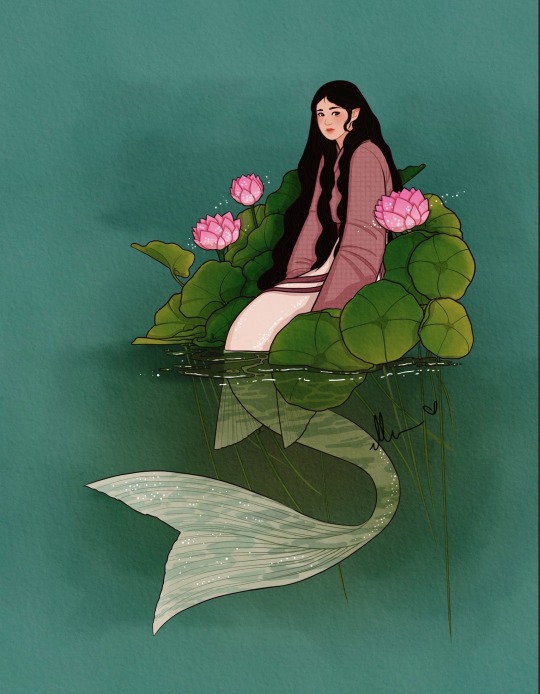
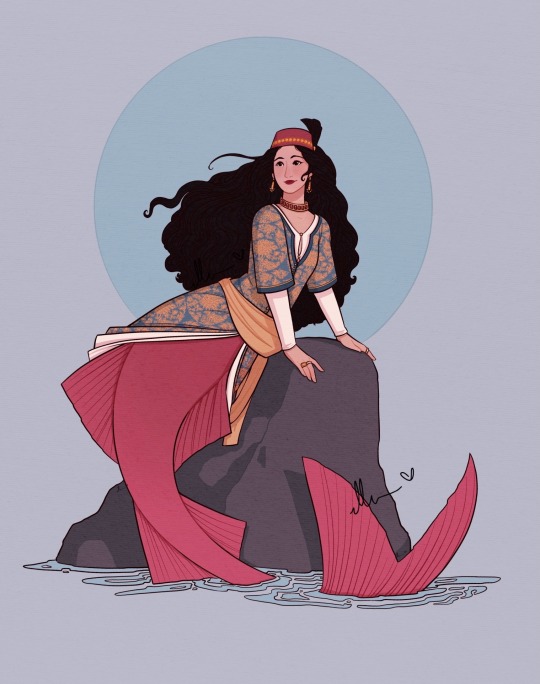

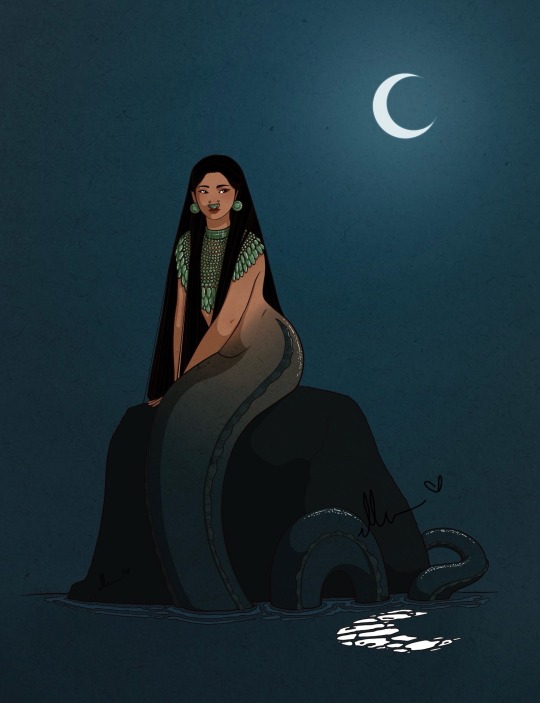
The seven new historical mermaids for Mermay 2024!
Here's the new set for Mermay 2024! What do you think? Which is your favorite? <3
I am the artist! Do not post without permission & credit! Thank you! Come visit me over on: instagram, tiktok or check out my coloring book available now \ („• ֊ •„) /
https://linktr.ee/ellen.artistic
#historical mermay#historical mermaid#mermaid#ellen artistic#ellenart#digital illustration#aztec#assyrian#rococo#ottoman mermaid#goryeo dynasty#ancient roman#minoan
781 notes
·
View notes
Text

Flood tablet/Epic of Gilgamesh, from the Library of Ashurbanipal, Assyrian, 7th century BC
from The British Museum
#history#antiquities#art#ancient history#ancient art#cuineiform#epic of gilgamesh#ancient mesopotamia#assyrian
1K notes
·
View notes
Text
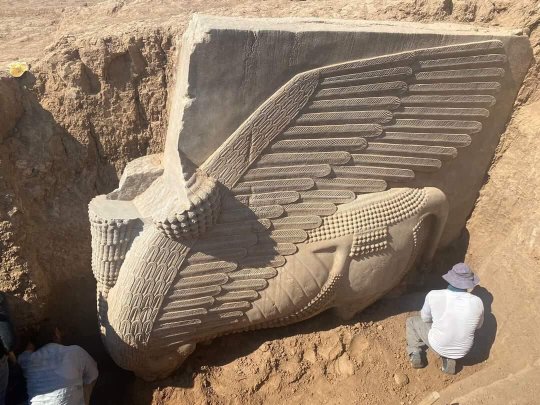
Ancient Assyrian Deity Statue Uncovered in Iraq
In a recent announcement from the The Iraqi State Board of Antiquities and Heritage (SBAH), archaeologists have successfully unearthed a remarkable ancient Assyrian deity statue known as a “lamassu” in Kursbad, Iraq.
A lamassu is a special Assyrian guardian deity, usually portrayed as a mix of human, bird, and either cow or lion features. These unique beings typically have a human-like head, a body resembling that of a bull or lion, and bird-like wings.
Guardian Lamassu sculptures in Assyria
In ancient Assyria, they often crafted pairs of lamassu sculptures and placed them at the entrances of palaces. These imposing figures faced both the streets and the inner courtyards.
What’s unique about these sculptures is that they were carved in high relief. When you look at them head-on, they seem still, but from the side, they appear to be in motion.
While we often see winged figures in the low-relief decorations inside rooms, lamassu were not commonly found as large figures in these spaces. However, they occasionally appeared in narrative reliefs. In these depictions, they seemed to take on the role of protectors for the Assyrians.
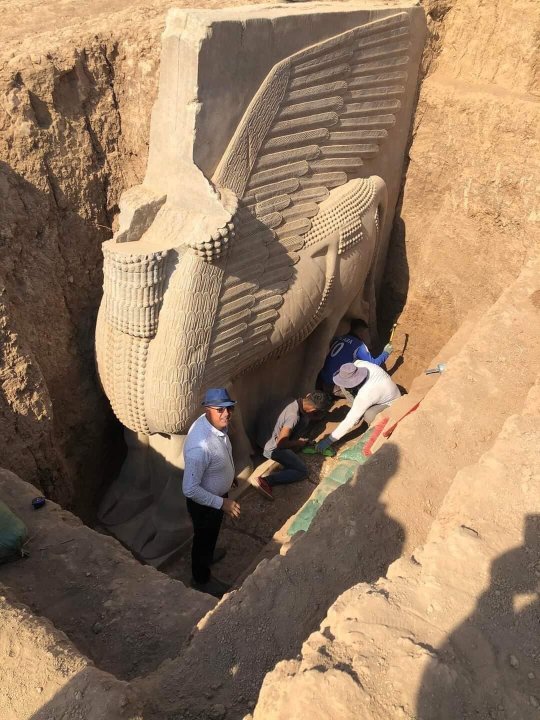
Ancient Assyrian deity statue in Iraq was discovered and then reburied
This discovery took place during their excavations at the 6th gate, situated in the western part of the ancient city of Khursbad.
Khursbad was originally built as a brand-new capital city by the Assyrian king Sargon II. He started this ambitious project shortly after he became king in 721 BC.
However, after Sargon II’s reign, his son and successor, Sennacherib, decided to shift the capital to Nineveh. This move left the construction of Khursbad unfinished, making it a fascinating historical puzzle.
As per the press release, the statue was originally discovered in 1992, when a team of Iraqi archaeologists stumbled upon the Assyrian deity statue. After the initial discovery of the lamassu, its head was unfortunately stolen in 1995. However, it was later recovered and is now safely preserved in the Iraqi Museum.
The main body of the Assyrian deity, was reburied to protect the statue and the surrounding architectural remains, a decision that likely saved it from destruction by ISIS, which systematically looted and destroyed the remains of Khursbad.
Collaboration between Iraqi and French archaeologists
In a remarkable collaborative effort between Iraqi and French archaeologists, Professor Dr. Ahmed Fakak Al-Badrani has spearheaded a mission that recently re-excavated the lamassu. This event marks the first time in thirty years that this ancient wonder has been unveiled to the world.
As stated by Dr. Layth Majid Hussein, the Chairman of the General Body for Archaeology and Heritage, the team is presently evaluating the condition of the lamassu to chart their forthcoming actions.
By Nisha Zahid.


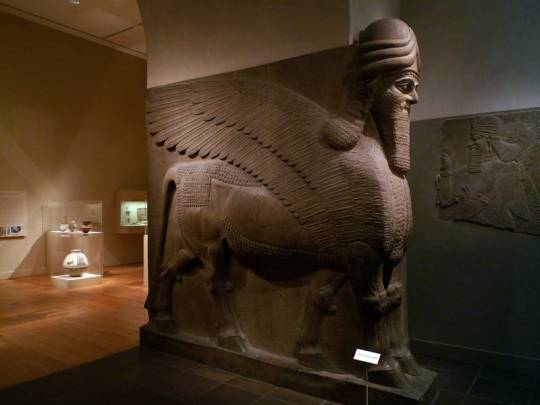
#Ancient Assyrian Deity Statue Uncovered in Iraq#Kursbad Iraq#lamassu#sculpture#stone sculpture#ancient artifacts#archeology#archeolgst#history#history news#ancient history#ancient culture#ancient civilizations#assyrian history#assyrian empire#ancient art
508 notes
·
View notes
Text

Cesare Saccaggi (1868-1934)
"Great Semiramis, Queen of Assyria" (c. 1905)
Oil on canvas, gold and precious stones
The myth of Semiramis has its roots in late antiquity. Historiography, religion, art and literature have contributed to passing on different and contradictory legends linked to her figure over the centuries: some recognize her as the enlightened Assyrian ruler Shammuramat, wife of King Shamshi-Adad V and regent of his son Addu-Nirari III--to whom we owe the realization of the hanging gardens of Babylon.For others, Semiramis is the daughter of a nymph, abandoned in the desert and then fed by doves - the 'daughter of the air', according to Calderón de la Barca and Carlo Gozzi. Or she is the daughter of the goddess Derceto and the Syrian Caistro, married first to Onne, then to King Nino, with whom she had a son who, according to tradition, when he became an adult, chased her from the throne and killed her. During her reign, Semiramis conquered Mesopotamia, Egypt and Ethiopia. Herodotus and Diodorus Siculus speak of her as a great and good sovereign.
#paintings#art#artwork#painting#female portrait#cesare saccaggi#oil on canvas#fine art#italian artist#gold#precious stones#portrait of a woman#big cat#animals#costume#costumes#history#mythology#assyrian#ancient assyria#aesthetic#aesthetics#white dress#dressess#early 1900s#early 20th century
411 notes
·
View notes
Text
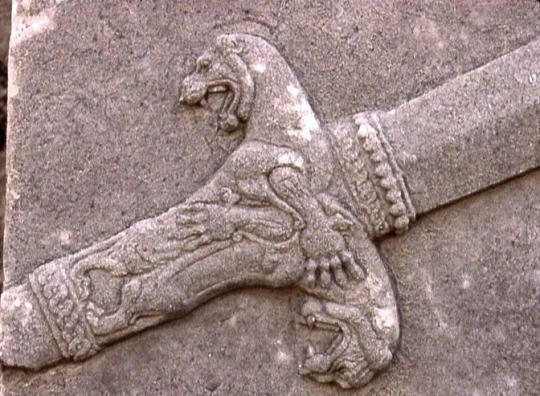
Assyrian relief sculpture of a decorated scabbard with lions.
233 notes
·
View notes
Text
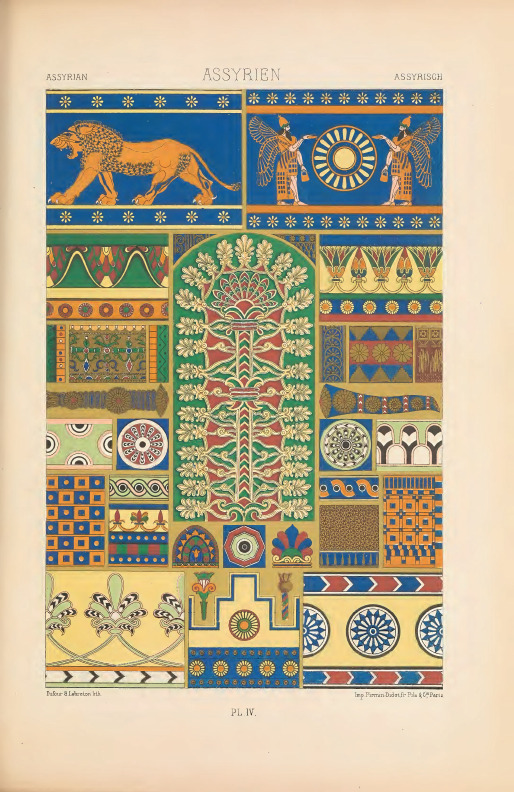

Albert Racinet's "Polychrome Ornament," 1869
PLATE IV
ASSYRIAN ART
EXAMPLES OF POLYCHROMATIC DECORATION
TWO distinct periods may be noted in Assyrian art: the first, that of the foundation of Babylon by the Nabateans, on an alluvial soil destitute of stone quarries-a period characterized by the exclusive use of brick, an.cl in which architecture was confined within very narrow limits; and a second period, that of the foundation of Nineveh by the Scythians, the conquerors of primitj.ve Babylon, in a region where basalt ancl numerous stone quarries rendered possible a monumental architecture quite unknown to the Babylonians.
It is to this Ninevite period, which might also be called the Scytho-Assyrian, that the majority of the remains collected in the museums of London and Paris belong; as also do the various specimens given in our plate.
NINEVEH - PALACE OF KHORSABAD.
No. 1.-Painted sculptures, after Layard.
Nos. 2, 3, 4.-Painted sculptures, after Victor Place. No. 5.-Bricks inlaid in colours, after Layard.
Nos. 6 to 10.-Enamelled bricks, after Victor Place. Nos. 11 to 18.-Various specimens, after La yard. Nos. 19, 20.-Paintings, after Victor Place.
Nos. 21 to 23.-Restorations, after Botta
#Albert Racinet#art#ancient history#ancient art#1800s art#1800s#19th century#ancient assyria#assyrian#antiquity#illustration#design#aesthetic#cultural art
54 notes
·
View notes
Text

~ Furniture plaque carved in relief with lion-headed figure.
Period: Neo-Assyrian
Date: ca. 8th–7th century BC.
Place of origin: Mesopotamia, Nimrud (ancient Kalhu)
Culture: Assyrian
Medium: Ivory
#ancient#ancient art#history#museum#archeology#ancient sculpture#ancient history#archaeology#mesopotamia#Assyria#neo Assyria#assyrian#nimrud#kalhu#lion#plaque#furniture plaque#ca. 8th century B.C.#ca. 7th century B.C.
921 notes
·
View notes
Text
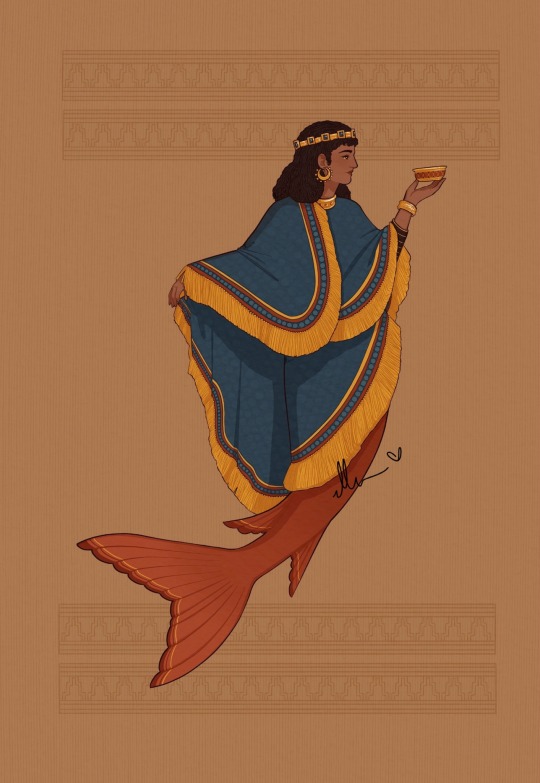
Ancient Assyrian Mermaid
Prompt 2 for chloe.z.arts' Historical Mermay challenge! I found an image of a Ancient Queen that I liked and I rolled with it. I don't think I have her perfectly right, but I really enjoy the amount of tassels on Ancient Assyrian clothing so I had fun!
I am the artist! Do not post without permission & credit! Thank you! Come visit me over on: instagram, tiktok or check out my coloring book available now \ („• ֊ •„) /
https://linktr.ee/ellen.artistic
#ancient assyria#ancient assyrian mermaid#historical mermay#historical mermaids#ellenart#digital illustration#historically inspired#mermay#mermaid#it's gonna be mermay#ellen artistic
728 notes
·
View notes
Text

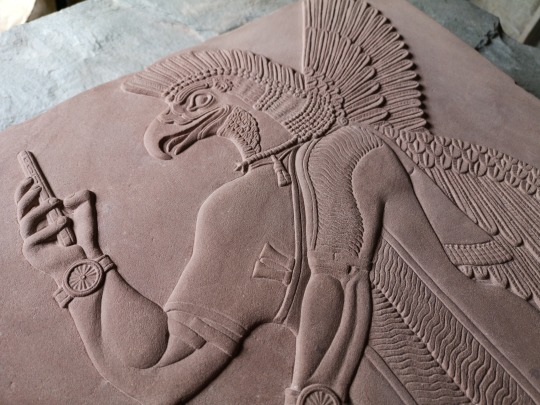

Out of place artifact.
Hand carved sandstone, based on an ancient Assyrian Winged Genie, but with a twist.
#carving#stone carving#art#traditional art#sculpture#assyrian#ancient history#archeology#history#ancient artifacts#mesopotamian art#mesopotamia#mesopotamian#genie#ancient art#ancientmonuments#antiquities#neoassyrian
134 notes
·
View notes
Text

Fragment of an alabaster relief depicting a cavalryman leading his horse to a river, Assyrian, 7th century BC
from The Metropolitan Museum of Art
439 notes
·
View notes
Photo
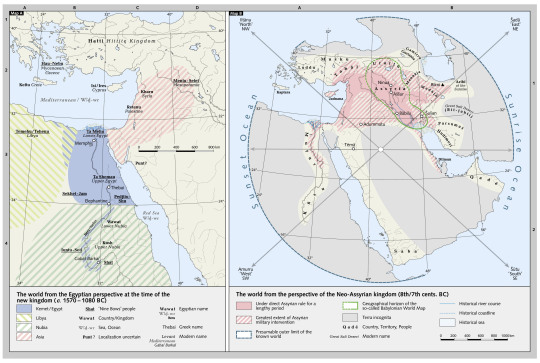
The world according to ancient Egyptians and Assyrians
by Renate Müller-Wollermann and Andreas Fuchs
108 notes
·
View notes
Text

Rassam Cylinder, a ten-sided clay cylinder that was created in c. 643 BC, during the reign of King Ashurbanipal (c. 685 BC - 631 BC) who ruled the Neo-Assyrian Empire from 669 - 631 BC.
It was discovered in the ancient Assyrian city of Nineveh, near Mosul, present-day Iraq, by Hormuzd Rassam (3 October 1826 - 16 September 1910) in 1854.
In over 1,300 lines of cuneiform text, the cylinder records nine military campaigns of Ashurbanipal, including his wars with Egypt, Elam and his brother, Shamash-shum-ukin.
It also records his accession to the throne and his restoration of the Palace of Sennacherib.
The cylinder is the most complete chronicle on the life of Ashurbanipal.
There are some extracts from the cylinder below:
"I am Ashurbanipal, offspring of Ashur and Bêlit, the oldest prince of the royal harem, whose name Ashur and Sin, the lord of the tiara, have named for the kingship from earliest (lit., distant) days, whom they formed in his mother's womb, for the rulership of Assyria; whom Shamash, Adad and Ishtar, by their unalterable (lit., established) decree, have ordered to exercise sovereignty.
Esarhaddon, king of Assyria, the father who begot me, respected the word of Ashur and Bêlit-ilê (the Lady of the Gods), his tutelary (divinities), when they gave the command that I should exercise sovereignty.
In the month of Airu, in the month of Ea, the lord of mankind, the twelfth day, an auspicious day, the feast day of Gula, at the sublime command which Ashur, Bêlit, Sin, Shamash, Adad, Bêl, Nabû, Ishtar of Nineveh, Queen of Kidmuri, Ishtar of Arbela, Urta, Nergal, Nusku, uttered, he gathered together the people of Assyria, great and small, from the upper to (lit., and) lower sea.
That they would accept (lit., guard) my crown princeship, and later my kingship, he made them take an oath by the great gods, and so he strengthened the bonds (between them and me)....
By the order of the great gods, whose names I called upon, extolling their glory, who commanded that I should exercise sovereignty, assigned me the task of adorning their sanctuaries, assailed my opponents on my behalf, slew my enemies, the valiant hero, beloved of Ashur and Ishtar, scion of royalty, am I.
Egyptian Campaign:
"In my first campaign I marched against Magan, Meluhha, Taharqa, king of Egypt and Ethiopia, whom Esarhaddon, king of Assyria, the father who begot me, had defeated, and whose land he brought under his sway.
This same Taharqa forgot the might of Ashur, Ishtar and the other great gods, my lords, and put his trust upon his own power.
He turned against the kings and regents whom my own father had appointed in Egypt.
He entered and took residence in Memphis, the city which my own father had conquered and incorporated into Assyrian territory.
A swift courier came to Nineveh and reported to me.
At these deeds, my heart became enraged, my soul cried out. I raised my hands in prayer to Ashur and the Assyrian Ishtar.
I mustered my mighty forces, which Ashur and Ishtar had placed into my hands. Against Egypt and Ethiopia, I directed the march."
Rassam Cylinder records the reign of Ashurbanipal until c. 645 BC.
The latter years of his reign are poorly recorded, probably due to the fact that the Neo-Assyrian Empire was plagued with troubles.
One of Ashurbanipal's last known inscription reads:
"I cannot do away with the strife in my country and the dissensions in my family; disturbing scandals oppress me always.
Illness of mind and flesh bow me down; with cries of woe I bring my days to an end.
On the day of the city god, the day of the festival, I am wretched; death is seizing hold upon me, and bears me down..."
Rassam Cylinder is currently on display in the British Museum.
A truly remarkable, yet biased, insight into the reign of Ashurbanipal and the world in which he lived.
📷: © Anthony Huan
#Rassam Cylinder#King Ashurbanipal#Neo-Assyrian Empire#Nineveh#Hormuzd Rassam#clay cylinder#cuneiform text#Palace of Sennacherib#British Museum#Assyria#ancient civilizations#Iraq#assyriology#military campaigns#cuneiform cylinder#cuneiform#writing systems
38 notes
·
View notes
Text
15 notes
·
View notes
Text

Painting from around two years ago, a Judean commander from the First Temple era (500 BC).
Learned a lot with this image. I still need to experiment more with bolder colors, and I am happy how it turned out here.
Should be able to share new images in a month or two!
Best,
Joel
#dungeons and dragons#board games#concept art#fantasy art#tabletop games#digital painting#magic the gathering#character design#ancient history#armor#israelite#biblical#assyrian#babylon#ancient egypt#ottoman#turkic#turkey#knight
62 notes
·
View notes
